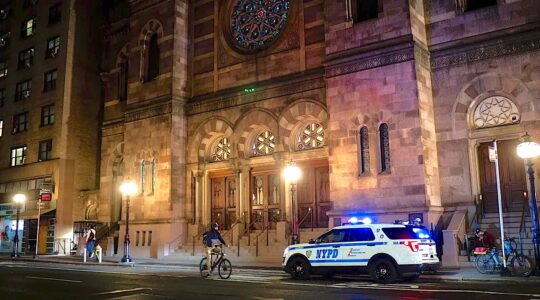In February 2002, Paul Margolis traveled to the south side of Ellis Island — not to the restored main buildings that now serve as a museum of immigration but to the abandoned site of hospital wards, quarantine quarters and the morgue. A documentary photographer, he found quiet beauty and powerful imagery amid the abundant decay and buried memories.
Visiting the area with a preservation group, he shot a series of photographs that he thought would be visual notes for a larger work when he’d return to the island. But soon after his visit, the area was sealed. Visitors can no longer access that part of the island. His photographs, now on view at the Living Room Gallery in Manhattan, are an artistic study in urban archaeology.
Capturing what is no longer visible, he shows the interiors of buildings, stairwells, broken windows, still open doorways, sinks and chairs that may have served in a doctor’s office. When he got there, the space had been untouched for about 60 years. Some photos provide a haunting reminder of the dark side of immigration history. Many of the people who walked these shadow-filled hallways didn’t survive, or were sent back across the ocean.
As Margolis says in an interview with The Jewish Week, he understands that “people bring a lot to these images”; so many Americans have their own connections to Ellis Island. Two of the photographer’s grandparents passed through Ellis Island, and so did all four of my grandparents (luckily not through the quarantine quarters). My father’s mother would tell of hiding her misshapen hand under her coat as she walked up the great stairway on arrival, fearful of being sent back.
Margolis, who took photographs for The Jewish Week in the 1990s, visited Ellis Island on an overcast afternoon, when there wasn’t much contrast between the light inside and outside. He points out that the areas he photographed “were not cheery places,” but that a lot of the utilitarian objects that remain are “incidentally beautiful,” like the patterned grates on a wall, decorative brickwork, a skylight and a sturdy metal fan. A row of well-constructed wooden file cabinets have drawers left open, as though someone will be right back.
“This was a factory,” he points out. “A factory designated for mass production of immigrants.”
For Margolis, this was a detour in his usual photographic focus. Usually, he’s a classic street photographer, capturing people and the unexpected in urban settings, most often in black-and-white.
Here, he shot in color, and his palette is warm, with earthy tones, and some faded blues and greens on the doors to the ferry terminal — which have since been restored.
The show’s signature photo shows an open set of doors leading into a hallway, with light streaming in through broken window frames to create patterns on the floor and the peeling ceiling. In a more playful image, the Statue of Liberty is visible through a hole in a window, and an American flag can be seen through a crack.
A self-taught photographer who first became interested in taking pictures when he was 9, Margolis says that he works quickly, always looking for “the decisive moment.” He learned most from the painter Edward Hopper, about showing people in isolation in a crowd. Among the photographers he looks to as mentors are Berenice Abbott, Henri Cartier-Bresson and Roman Vishniac.
“I’m interested in documenting little-known and unseen things that are about to vanish or have vanished, and the traces of them,” he says. He has also photographed in Israel, in small Jewish communities in Ireland and Cuba, and produced a series on Jewish poverty in New York City.
Margolis works for a city agency, taking photographs and doing research. Always, he has his Leica with him, shooting a lot on the subway and out in the streets. He has also worked as a teacher and says that teaching made him braver about approaching people as a photographer. When teaching English as a second language, he would often bring his immigrant students to Ellis Island (to the public side).
Support the New York Jewish Week
Our nonprofit newsroom depends on readers like you. Make a donation now to support independent Jewish journalism in New York.
“None of my students had an easy time of immigrating. But they realized there were worse things than flying to the U.S. in a few hours. Here, people had come in steerage, with incurable diseases — they were quarantined and died, or were sent back,” he says.
“Hidden Ellis Island” is on view at the Living Room Gallery, St. Peter’s Church, 619 Lexington Ave. at 54th Street (entrance is on 54th). Admission is free. Open daily, 9 a.m. to 7 p.m., through June 29.
The New York Jewish Week brings you the stories behind the headlines, keeping you connected to Jewish life in New York. Help sustain the reporting you trust by donating today.




